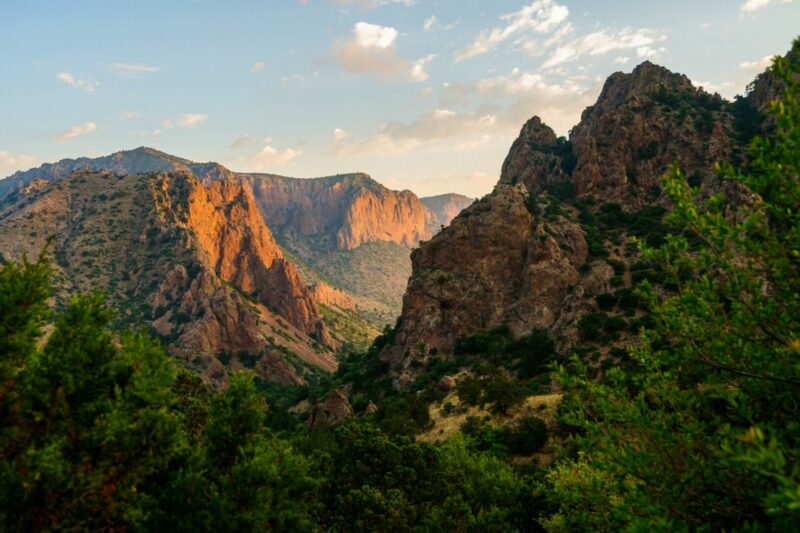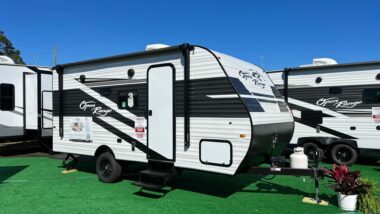Table of Contents Show
Big Bend National Park is an incredible national park that’s often underappreciated. Due to its remote location in southern Texas, it’s a little out of the way for most people. However, we think everyone should experience the beauty of this rugged terrain.
Today, we want to help you with everything you need to know about Big Bend National Park camping. Let’s get started!
About Big Bend National Park
Big Bend National Park is 800,000 acres and is home to the protected Chihuahuan Desert area in the United States. If you’re looking for an adventure, you can easily find it here.
The park contains multiple habitats, including a river desert and mountains. However, the park sits in one of the most remote sections of the lower 48 states.
With hundreds of miles of hiking trails, paved roads, and dirt roads, you can explore the park at your level of comfort. If you enjoy hiking, you can hike through the Chihuahuan Desert, along the Rio Grande River, or over the 20 miles of mountain trails.
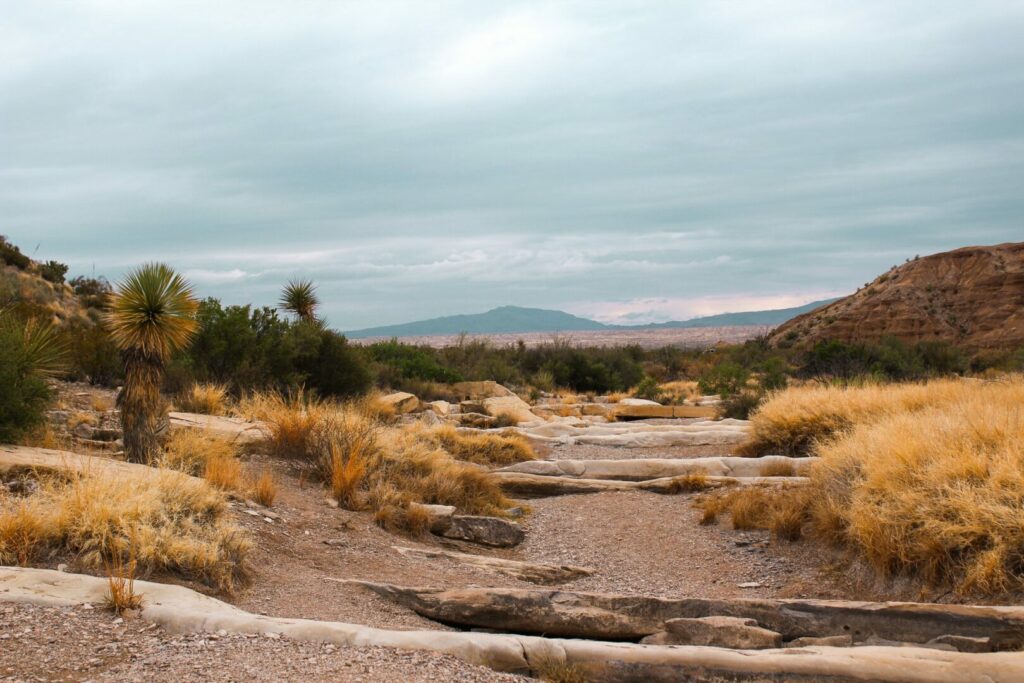
Trails vary in length and difficulty. Window View Trail is an easy three-mile paved trail that’s wheelchair accessible and provides excellent views of the Chisos Basin.
When you visit Big Bend National Park, you can expect to see massive canyons, desert landscapes, and a constantly changing river. Exploring the park allows you to experience a fraction of the difficulties travelers experienced as they made their way west in the late 1800s. It’s a vast, rugged terrain that shows no mercy on those unprepared.
When Is the Best Time to Go Camping in Big Bend National Park?
A typical Big Bend National Park busy season lasts from November through April as guests seek warmer temperatures. Many of the park’s facilities reach capacity during long holiday weekends, the weeks during Christmas and Thanksgiving, and pretty much anytime from mid-January to mid-April. While these are the busy seasons, this is still the best time to visit the park.
The weather from May to October can be intense, especially on the desert floor. The temperatures often exceed 100 degrees Fahrenheit on the desert floor during the summer months.
However, temperatures typically are 10 to 20 degrees cooler if you head up in elevation to the Chisos Mountains. If you plan to come during the summer months, bring plenty of water and make sure you dress appropriately.
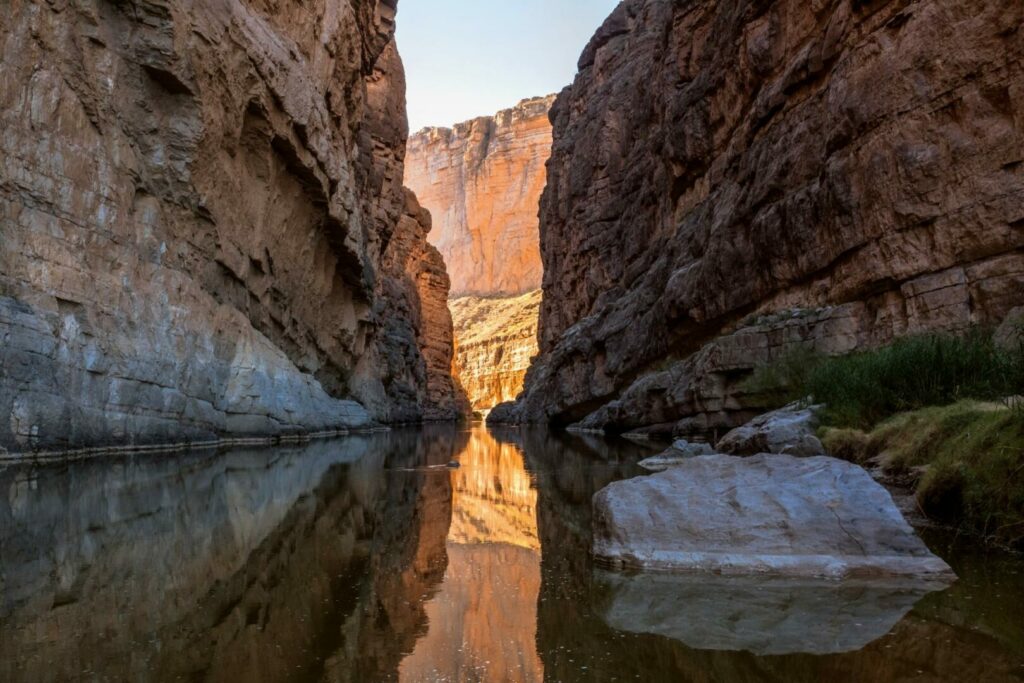
The park typically welcomes less than 500,000 in any given year. So even in the busiest of seasons, there’s still plenty of room to explore the park.
Make sure to plan months in advance if you need a campsite or other reservations during the busy season. The park has a single lodge/hotel, three developed campgrounds, and a generous amount of backroad campsites.
How Much Does It Cost to Camp at Big Bend?
There are a few options for camping in and around Big Bend National Park. The National Park Service maintains and operates three developed campgrounds in the park’s front country. These are $16 per night, but those with a senior or access pass can use their 50% discount to get sites for $8 per night. Two-thirds of these sites are reservable six months in advance, and the remaining one-third are reservable up to 14 days in advance.
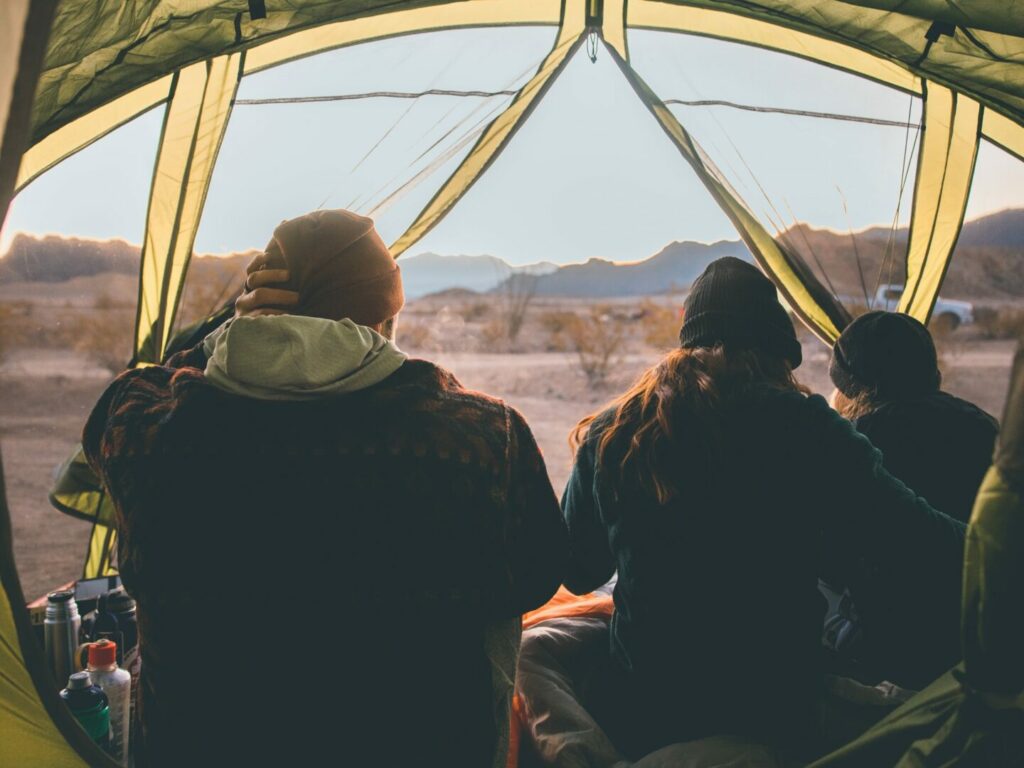
If you enjoy backcountry camping, you can score a backcountry camping permit for $10 per night (or $5 with a senior or access pass). A backcountry camping permit allows you to call any of the designated backpacking sites or backcountry roadside campsites home during your time in the park. These permits are in high demand during the busy season, and sites often reach capacity.
The final option for camping at Big Bend is Rio Grande Village RV Campground. This campground has the only full hook-up campsites in the entire park. Forever Resorts operates and maintains this campground as a concessionaire and is not a part of the national park. Nightly fees are $36 for double occupancy and $3 per additional guest.
Is It Safe to Camp in Big Bend National Park?
Camping at Big Bend National Park is typically as safe as any other national park. The park experiences fewer accidents each year than parks like Yellowstone, Great Smoky Mountains, and Yosemite.
While those parks experience significantly higher volumes of guests, backcountry camping in the Texas desert does have its own dangers.
The desert is home to some interesting and potentially dangerous critters. There are venomous snakes, scorpions, spiders, and centipedes during the warmer months. You should always inspect your shoes, sleeping bags, and bedding before using them.
There is also potential for bear and mountain lion encounters in the park. However, it’s more than just the animals that can be dangerous.

The region can have some rather intense weather. Texas summers can be downright brutal. Extreme heat can lead to dehydration, heat stroke, and severe sunburns. Heading out to camp unprepared for the environment can be a costly mistake with serious consequences due to the remote location and limited access to rescue services.
Campgrounds in Big Bend National Park
There are a few campgrounds in Big Bend National Park. These can make it very easy to spend multiple days exploring the park. Let’s look at them and see which one might be right for you!
Chisos Basin Campground
Address: Window View Dr, Big Bend National Park, TX 79834
Season Dates: Year-Round
Sites Available: 56 sites
Price: $16 per night ($8 per night with Senior or Access Pass)
About: If you’re planning to do some hiking while visiting the park, Chisos Basin Campground can serve as the perfect spot to set up your basecamp. Several trailheads start within the campground, and you can start early and beat the crowds.
Many of the sites are relatively close together and have limited privacy. However, the views into the basin are well worth it.
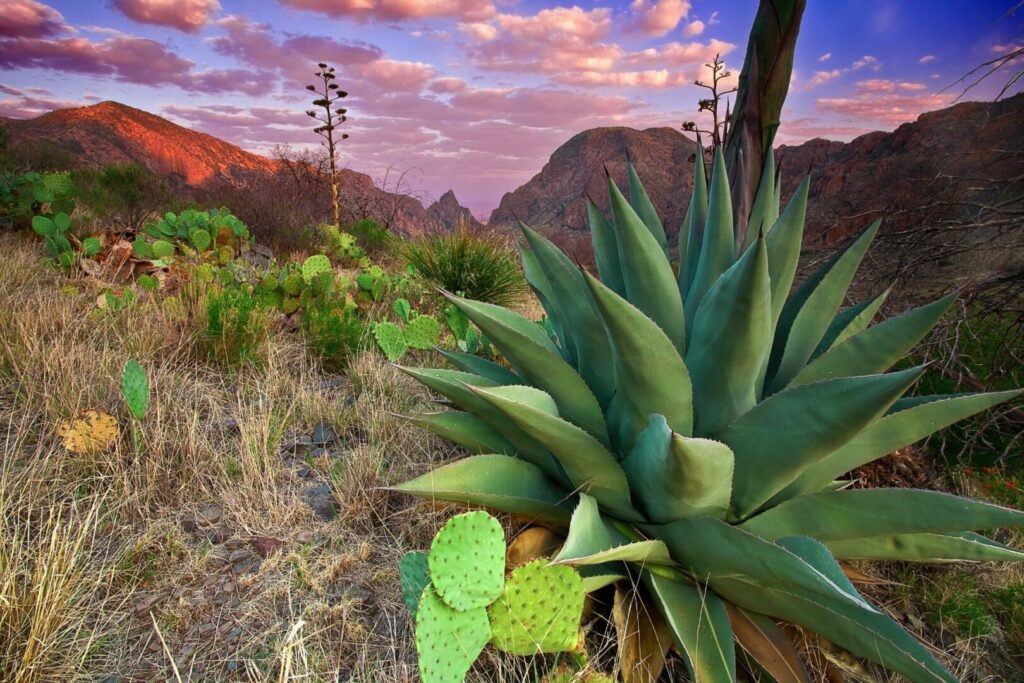
This campground is for dry camping. So you’ll need to fill up your fresh water tank and have a plan for your electrical needs. The campground typically experiences a tremendous amount of sunshine, which is great for solar. Generator hours in this park are 8 a.m. to 11 a.m. and 5 p.m. to 8 p.m.
Pro Tip: If you’re new to this camping style, get to know the essentials of dry camping before you head out.
Rio Grande Village Campground
Address: Big Bend National Park, TX 79834
Season Dates: Year-Round
Sites Available: 93 sites
Price: $16 per night ($8 per night with Senior or Access Pass)
About: Rio Grande Village Campground is a primitive campground within Big Bend National Park. You can camp amongst a grove of cottonwoods and acacia trees at this campground. You’ll be camping at 1,850 feet elevation and next to the Rio Grande River.
The campground has flush toilets, running water, picnic tables, grills, and a dump station nearby. You can even rinse off in the park’s showers after a day of adventuring.
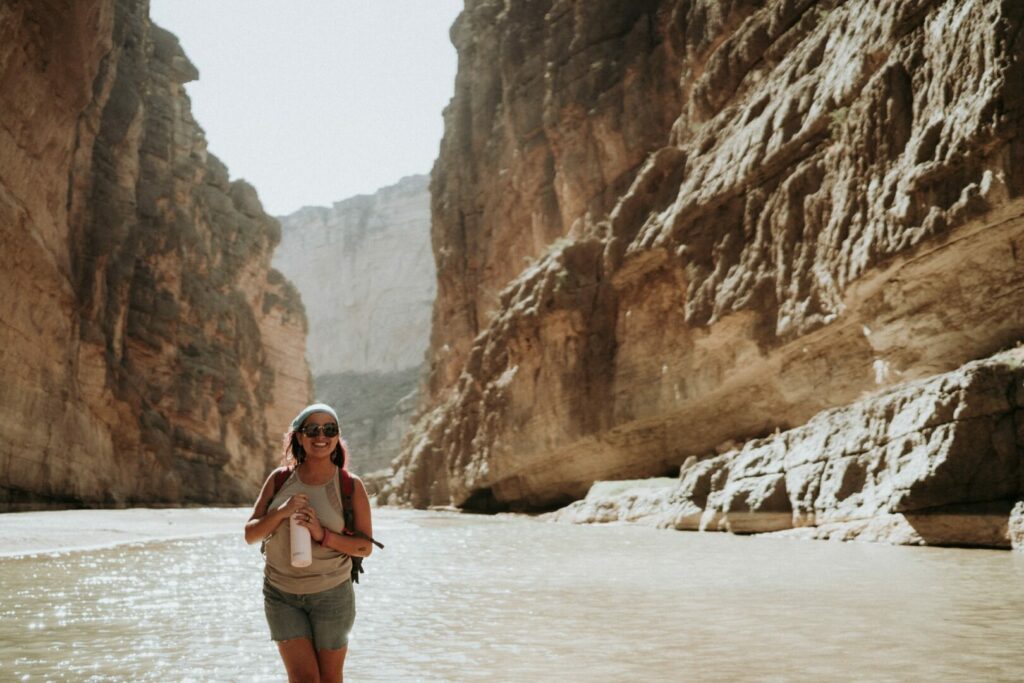
Guests rave about the ease of birdwatching, hiking, and exploring from this park. They also love that this park is big-rig friendly. The sunsets off the bluffs are hard to beat and provide the perfect ending to a day of exploring Big Bend National Park.
Cottonwood Campground
Address: Cottonwood Campground Rd, Terlingua, TX 79852
Season Dates: November 1 to April 30
Sites Available: 22 sites
Price: $16 per night ($8 per night with Senior or Access Pass)
About: Cottonwood Campground sits at 2,100 feet elevation. Here you’ll experience cooler temperatures during the peak seasons. This is a semi-developed campground with gravel surfaces for roads and campsites.
If you’re looking for peace and quiet, this is the Big Bend National Parking camping option for you! The park does not allow generators, which is excellent for those with plenty of solar to charge their batteries.
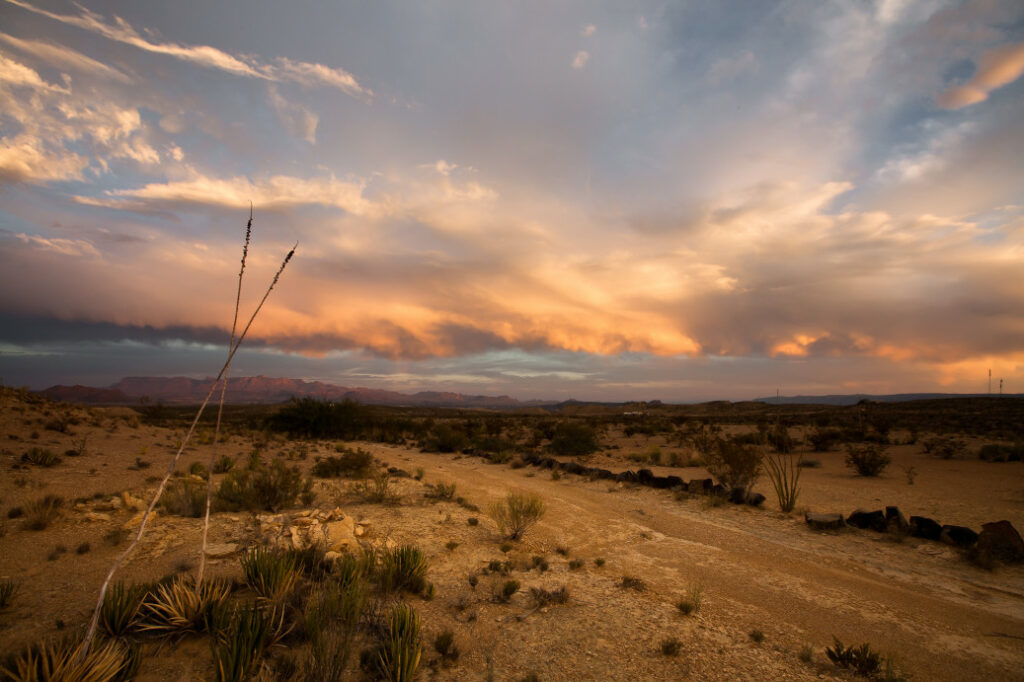
Staying here means you’re only a few minutes from Santa Elena Canyon, which is one of the most beautiful spots in the entire park. However, the sites are rather narrow and not great for larger rigs. If your RV is over 30 feet long or needs a generator, it may be best to consider a different campground.
Rio Grande Village RV Park
Address: Big Bend National Park, TX 79834
Season Dates: November 1 to April 30
Sites Available: 22 sites
Price: $36 per night for double occupancy ($3 per night for each additional guest)
About: Rio Grande Village RV Park is the only campground in Big Bend National Park with electrical, water, or sewer connections. All 22 sites are back-in only, and tent camping is prohibited. The paved campsites are open and have grass and trees lining the edges.
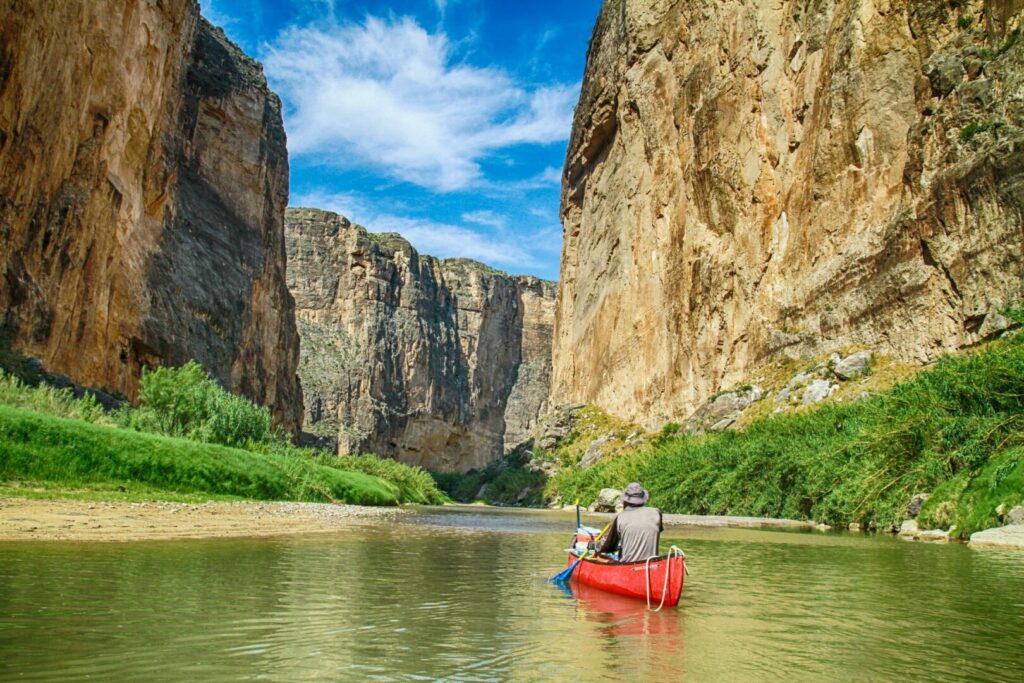
The campground is next to the Rio Grande Village camp store, which is very convenient if you forget something or need to stock up on supplies. You can make reservations by contacting Forever Resorts directly, as this park contracts them to manage the property.
How to Reserve a Campground in Big Bend
Camping at Big Bend National Park is in high demand, especially during the peak season. You can make reservations through Recreation.gov for the three established campgrounds. However, you will need to contact Forever Resorts directly to make Rio Grande Village RV Park reservations.
Because of the demand for campsites, you’ll need to make reservations months in advance. You can make reservations at Chisos Basin and Rio Grande Village Campground up to six months in advance and Rio Grande Village RV Park up to a year in advance. Getting a reservation at Cottonwood Campground can be tricky as you can only make reservations 14 days in advance.
Pro Tip: Trying to camp in a sought after area can have its frustrations. Learn how to avoid regretting your national park camping trip.
Camping Limits in Big Bend National Park
Guests can camp in Big Bend National Park for a maximum of 14 consecutive days and 28 total nights in a calendar year. However, guests can only stay for 14 nights during the busy season (January 1 to April 15).
Can You Have a Campfire in Big Bend National Park?
No, wood and ground fires are strictly prohibited within all Big Bend National Park campgrounds. However, you can use charcoal fires in an above-ground grill and liquid-fuel stoves.
If you’re using a charcoal grill, you must pack out all ashes from the charcoal. You should also adhere to all other leave no trace rules while in the park.
Your Next Adventure: When you’re done exploring Big Bend, head west to Carlsbad Caverns National Park to witness the awe-inspiring bat flight!
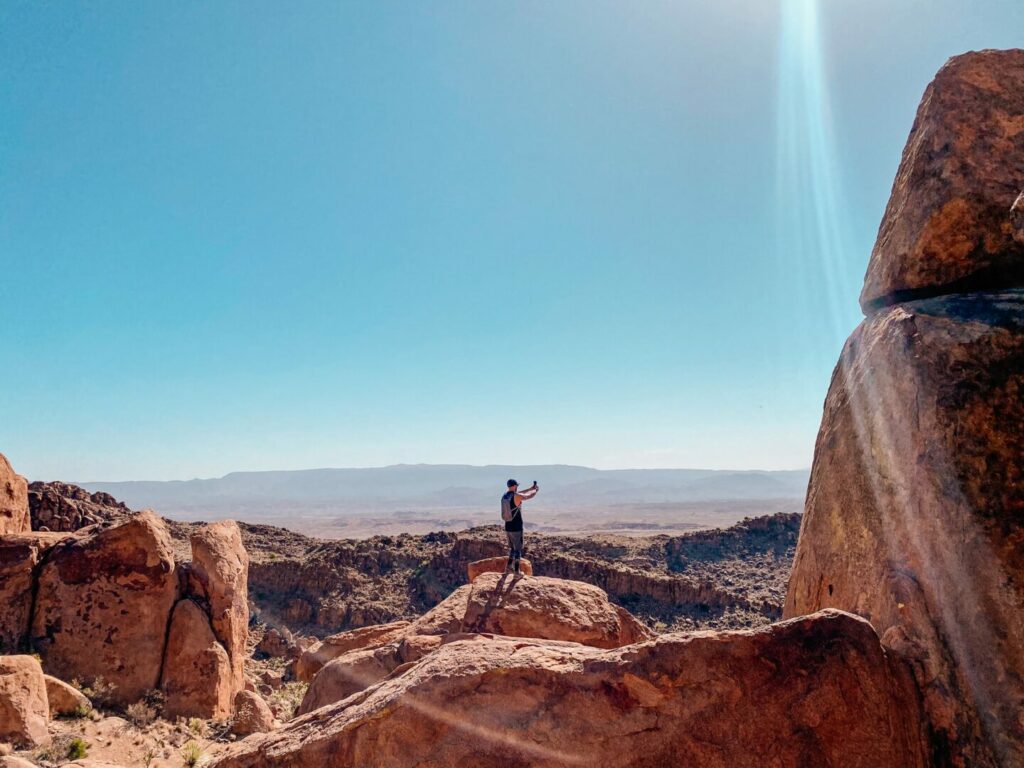
Make a Plan to Camp in Big Bend National Park
Big Bend National Park is an incredible park managed by the National Park Service. Camping within the park allows you to maximize your time and spend more time hiking and exploring the park.
If you get lucky and it’s a clear night, you’ll likely see more stars than you’ve ever seen in your entire life. The remote location and minimal light pollution cause the skies to come alive at night. It’s a bucket-list camping location that we think you need to experience!
Have you visited Big Bend National Park?




